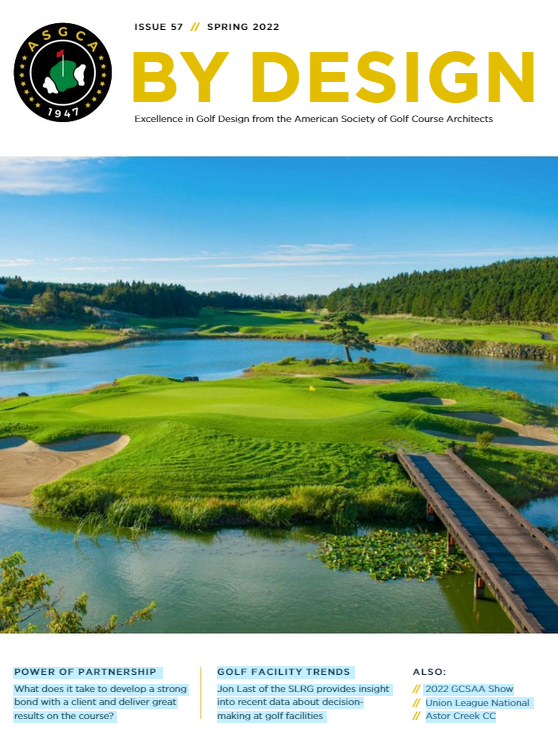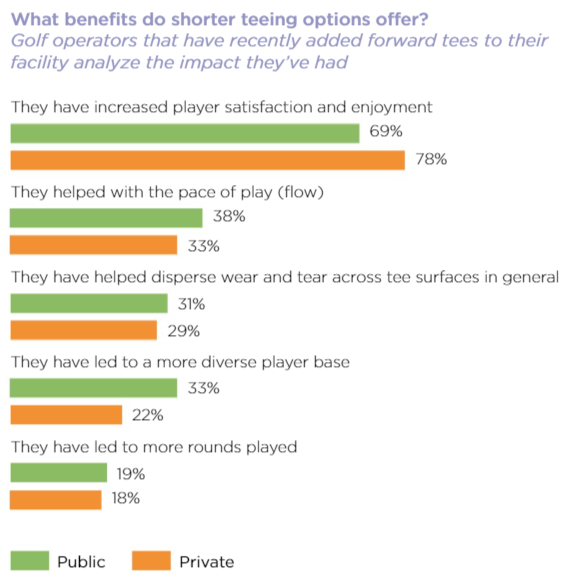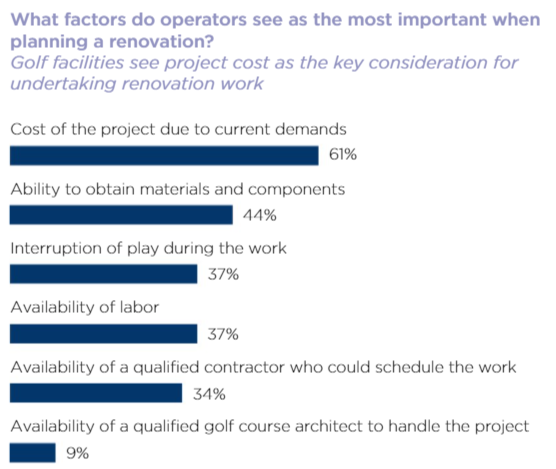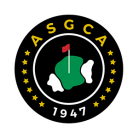The Spring issue of the American Society of Golf Course Architects’ By Design features highlights from the new ASGCA Trend Watch, with comments from SLRG President Jon Last

The pandemic-fueled surge in golf participation has paved the way for an increase in the number of golf facilities speeding up capital projects. While last spring I wrote about seeing an increase in the number of golfers taking to the course, the highlight of this year’s Golf Facility Market Trend Watch report is that more than twice as many golf course architects, in comparison to last year’s survey, see facilities accelerating timetables for capital projects.
The question related to this data was introduced for the 2021 report, with 16 percent of architects saying that clubs sped up capital projects because of COVID, while the 2022 report, the fifth annual study produced by the Sports & Leisure Research Group (SLRG) and American Society of Golf Course Architects (ASGCA), shows an increase to 37 percent. Clearly a healthier top line, due to the surge in participation during the pandemic, has encouraged facilities to move forward with long contemplated capital projects.
Our 2021 report saw practice area improvements as the most popular type of project that golf course architects were involved in over the previous 24 months. In 2022 though, master planning regains that position, with 82 percent of architects working on at least one.
Optimism among golf course designers is rising, with 29 percent (compared to 23 percent last year) saying they expect a 5 to 10 percent increase in their renovation revenue over the next 24 months.
ASGCA Past President Tom Marzolf highlighted to SLRG and ASGCA an area he felt warranted research. “There is an ongoing issue in the US with labor for golf maintenance, and we hoped to use the survey to track what is going on with the hourly wage rate,” says Marzolf. “The goal with the questions we added was to help course owners, club managers and board members to better understand how difficult labor budgets are for course superintendents, as most supers struggle all year to attract a stable workforce with open positions not being filled due to low wages.”

Our recent data shows that 85 percent of private facilities and 76 percent of public facilities had at least one open golf maintenance position during the 2021 golf season. “The hourly rate must increase to allow golf to flourish and grows,” says Marzolf. “Golf is behind the curve, and club management needs to look at the data to educate themselves to the reality of the situation.”
However, some positive steps have already been taken regarding staff wages. Sixty percent of public facilities have raised minimum hourly wages for golf maintenance positions during or for the past season, a 39 percent increase in comparison to the previous season. This is mirrored with private facilities, with 65 percent of clubs raising wages for golf maintenance positions during the same period.
I was also intrigued to see a greater focus on  creating more forward tee placement options and the various benefits they have produced, as seen in the graph at the top of this page. This is consistent with a significant body of additional research that we’ve conducted, which points to the benefits of providing a greater variety of options for newer and less skilled players, which historically have received less attention in course set-up and design.
creating more forward tee placement options and the various benefits they have produced, as seen in the graph at the top of this page. This is consistent with a significant body of additional research that we’ve conducted, which points to the benefits of providing a greater variety of options for newer and less skilled players, which historically have received less attention in course set-up and design.
